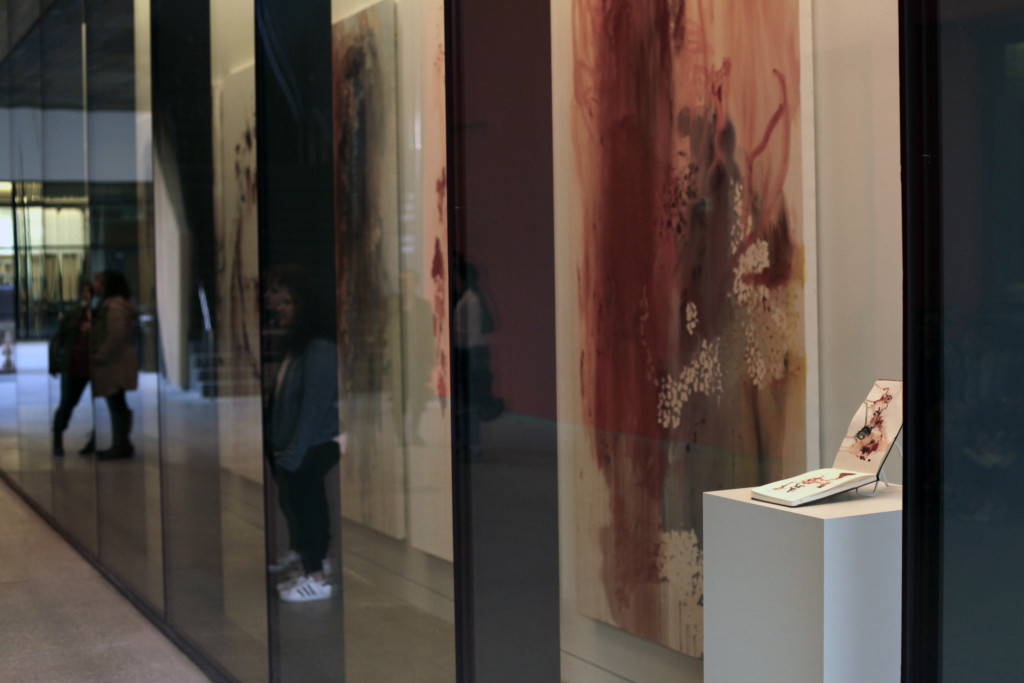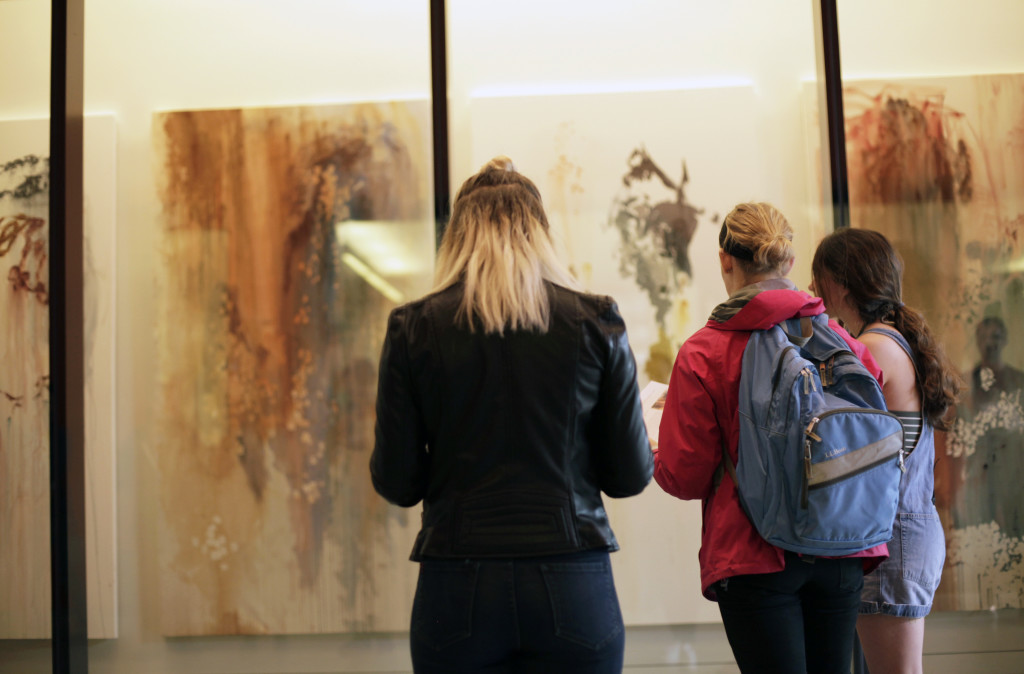
Senior studio art major Maia Paroginog’s solo Honor Exhibit, now on display at McMurtry, marks a poignant and powerful shift in their artistic oeuvre. Maia’s first exploration into abstraction, Mark These Cradles is the culmination of Maia’s many years of dedication to the Stanford studio art program. In each of the eight massive 98” x 52” works on canvas, Paroginog’s maturity, dimensionality, passion, and emotion is clear. Maia explains that Mark These Cradles differs from their previous works in that they worked completely intuitively on these pieces rather than working off of pre-planned sketches.
Maia’s previous work is heavily influenced by the human figure and often works from photography. Mark These Cradles is an artistic exploration of an entirely different genre. The unprecedented massive scale of the works forced Paroginog to use their entire body in creating the compositions. The fluid nature of the works and massive scale forced Maia to work quickly and with great focus in order to ensure a cohesive final product. In this challenge, Maia has succeeded greatly. The works are marked by a nuanced ambiguity that encourages viewers to question their role in society both on an individual level and a communal level.
Paroginog explains that this exhibit “explores this idea of an imaginary landscape and the lack of a homeland” in order to underscore the ambiguity attached to the concept of “home.” The “intentional ambiguity” present in Maia’s works is meant to engender feelings of unfamiliarity and displacement. While their previous work focused largely on figure drawings, Maia notes that in Mark These Cradles they purposefully “deny the figure its wholeness; instead referencing the fragmented sense of self as a body displaced from its physical origins.” Rather than suggesting the human figure through figural lines, Maia instead references the ambiguity of the self through their unique treatment of artistic materials. In each of their landscapes, Paroginog uses layers of diluted and reinforced paint to create ethereal landscapes of self-exploration that do not immediately call to mind any one specific artistic medium.

Due to their large-scale and rectangular orientation, each of the works on canvas demand extended viewing from onlookers. The longer you stand in front of Maia’s works, the more you will discover about their art and, ultimately, about yourself. The installation of this exhibit is extremely conducive to introspection in that each of the compositions become a complex mirror when viewed through the reflective glass panels that stand between the work and the viewer. The reflective glass allows the viewer to quickly alternate between concentrating on Paroginog’s otherworldly compositions and on their own fragmented reflection.
Paroginog notes that this juxtaposition suggests the splintered nature of an individual’s relationship with their surroundings, and in particular, their ancestral homeland. Maia was born in the Philippines and raised in Washington state, so this concept of a fragmented and ambiguous identity is a personal one for the artist.

The work’s titles are based on latitudinal and longitudinal coordinates selected by the artist on latlong.net. Rather than representing locations of personal or historical importance, Paroginog found these coordinates by typing sentiments into the search box such as “missing” or “lost”. Maia notes that they no longer remember which words correspond to the coordinates of which painting, but in effect, this is not important. Instead, the works collectively represent detachment, confusion, unfamiliarity, and absence-a powerful twist of emotion that supersedes the ability to tie Maia’s work to any one written word.
On a personal note, I first met Maia when we were studying abroad together in Florence last winter. I distinctly remember our first real interaction: we sat together at a gelato shop outside the city center talking art and life. Maia’s genuine persona and passionate world outlook opened my eyes to ideas and concepts I had not previously considered. I am confident that spending time with Maia’s works at McMurtry’s Moghadam Gallery will lead viewers to the same enlightened conclusion.
Mark These Cradles opened this weekend and will be on view until May 14th.
Photos courtesy of Elijah Ndoumbé.
